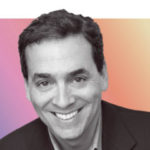For James Schultze, CMP, the realities of security at meetings and events in the post-9/11 era are encapsulated by a client he worked with on two events in the aftermath of the attacks. The first was a 7,500-attendee trade show that the client — a large tractor manufacturer — was scheduled to hold for its dealers in a centrally located city in the United States in November 2001. “They were very concerned about the target that they presented to terrorists,” said Schultze, a retired U.S. Marine Corps officer who has nearly 20 years of experience planning business events. “I put together a white paper on it for them to say, ‘Listen, guys, you are not a target, all right? You don’t make a good target for terrorists. The town that you’re going to doesn’t make a good target for terrorists. That is not the issue for you.’”

Two years later, the client wanted to hold a private event on the National Mall in Washington, D.C. — one of the first that would be permitted there after 9/11. This time, the security outlook was 180-degrees different. “They didn’t hold their event,” Schultze said, “mainly because one of the issues was, okay, we need to do this kind of security involved with it, and the prices start to escalate to the point where people start to realize, Wow, it takes a lot of money to keep everything secure.”
Somewhere between those two extremes — no risk and high risk — you’ll find the threat profile for your typical meeting or convention, a com-plicated algorithm that crunches such factors as the stability of the destination, its desirability as a political target, whether the organizing group’s mission is controversial, and random chance. It’s difficult, imprecise — and only growing in importance for meeting and events, according to the results of a new Convene survey as well as inter-views with industry professionals in a variety of sectors. Much of that has to do with a growing perception that — in light of mass shootings in malls, office buildings, churches, schools, and other public spaces in the United States, and terror attacks like last fall’s in Paris, which specifically targeted event venues — conventions have been lucky.
“When you go into a convention center for a trade show or a meeting or convention,” said David DuBois, CMP, CAE, CTA, president and CEO of the International Association of Exhibitions and Events (IAEE), “typically you walk in the building, you walk up to a reg counter, then you get a badge, and in most cases you’re not even scanned to go into a meeting room. Think about convention centers like McCormick Place, Orlando, the D.C. convention center — 1,326 doors. Even a small convention center might have 50 doors. There might be cameras, there might not be cameras. What I’m saying is, convention centers are soft targets.”
THREAT ASSESSMENT
Safety and security are two different things. While safety has to do with maintaining an internal environment that’s free from accidents and other disruptions, security is more concerned with active threats from external sources — traditionally lower-key elements like pick-pockets and protesters, but increasingly focused on more drastic, larger-scale attacks such as mass shootings and terrorism-related bombings.
In Convene’s recent survey, 67 percent of respondents said their level of concern about event security has increased in the last five years, while 45 percent are spending more on security than they were three years ago. As part of its 2017 Global Meetings and Events Forecast, American Express Meetings & Events identified “duty of care” as a growing area of focus for business travel, noting that “meetings and events present some unique challenges when it comes to the tracking, management, and ability to respond in a timely and comprehensive manner during an unexpected event or interruption.” And at IMEX America in Las Vegas in October, a group of industry organizations — led by the International Association of Venue Managers (IAVM), the Exhibition Services and Contractors Association, and IAEE — announced the creation of the Exhibitions and Meetings Safety and Security Initiative, which will work to develop security guidelines for convention centers that align with the U.S. Department of Homeland Security’s SAFETY (Support Anti-Terrorism by Fostering Effective Technologies) Act.
 “We want to be in front of it. We want to be prepared,” IAVM President and CEO Brad Mayne, CFE, told IMEX America TV. “We want to be able to mitigate the chances of it happening. We want to be able to address if we do have problems that we can take care of it immediately.”
“We want to be in front of it. We want to be prepared,” IAVM President and CEO Brad Mayne, CFE, told IMEX America TV. “We want to be able to mitigate the chances of it happening. We want to be able to address if we do have problems that we can take care of it immediately.”

Across the industry, there’s a realization that “it” doesn’t mean what it used to. “Security used to be about trying to make sure that there was no theft, or minimal theft, and trying to make sure that only credentialed attendees were allowed into the space,” said Alan Steel, president and CEO of the New York Convention Center Operating Corporation, which runs the Jacob K. Javits Convention Center — a scant four miles from the World Trade Center site in Lower Manhattan. “That is still a function of the security plan, but particularly in a city like New York — and also in other convention centers in other cities, too — there is now a need for a broader security concern to be addressed, and that’s terrorism threats. We have not had a significant event in our industry, but obviously we run the risk with the profile of some of the events that we have of attracting attention.”

It’s much the same story in the other destination that was targeted on Sept. 11. The Walter E. Washington Convention Center in Washington, D.C., sits less than a mile from the White House and about five miles from the Pentagon in Arlington, Virginia. Among the many events that the center hosts every year is the Washington Auto Show — which ever since the 9/11 attacks Homeland Security has asked not to publicize its total attendance. “We’re talking about an iconic city, in an iconic building, with an iconic industry, and a lot of people coming,” said Robert Yoffe, owner of Yoffe Exposition Services and director of the auto show. “They felt at the time, and they continue to feel, that we are fairly highly rated in the target system.”

Ozgul Ozkan Yavuz, general manager of the Istanbul Convention & Visitors Bureau — whose destination suffered a terrorist attack that killed 45 people at Atatürk Airport in June — thinks all major urban areas are at risk. “Especially in these days,” she said, “we are all aware that security is the major global concern to all metropolitan cities, and we know that these concerns are affect-ing people’s choice of destinations for their future leisure and business events. And these kinds of security concerns were not the case five or 10 years ago.”
So far, the closest that a convention center in the United States has come to a known terror attack is … pretty darn close: The Boston Marathon bombings in 2013 happened a few blocks from the John B. Hynes Veterans Memo-rial Convention Center. “What if that happened right in front of the Hynes Convention Center,” DuBois said, “and all of a sudden the world sees [a head-line that says,] ‘Explosion at Hynes Convention Center’? How dramatic would that be? It would be another 9/11 — people scared crapless to go into a convention center, because now they don’t think they’re safe. How negative would that be to the convention and trade-show business?”
 Meeting professionals in the United States are particularly concerned about mass shootings, which have become prevalent enough that they now have a more technically specific euphemism: active-shooter situations. They’re even making some planners think twice about meeting in a state that permits open carry of firearms. In the Convene survey, 24 percent of respondents said they take open-carry legislation into account when making site selections. And while only 5 percent reported that gun legislation has had an impact on one of their meetings, several respondents offered blunt comments about that.
Meeting professionals in the United States are particularly concerned about mass shootings, which have become prevalent enough that they now have a more technically specific euphemism: active-shooter situations. They’re even making some planners think twice about meeting in a state that permits open carry of firearms. In the Convene survey, 24 percent of respondents said they take open-carry legislation into account when making site selections. And while only 5 percent reported that gun legislation has had an impact on one of their meetings, several respondents offered blunt comments about that.
“We try to stay away from organizing an event in an open-carry state, particularly states with the loosest laws,” one respondent wrote. “Our international participants have inquired about the potential safety concerns they would face in coming to a conference, for instance, in a state like Texas, where open carry has received a lot of publicity and where there seems to be a high amount of gun violence. Due to this concern, we have scheduled more conferences in Canada and also in Europe.”
RISKS AND RESPONSIBILITIES

Amid this growing realization of new, more pervasive threats, what are meeting professionals doing about it? About 42 percent of respondents to Convene’s survey create a safety plan for each of their events, while 57 percent always carry event insurance. “The sponsoring organization of a meeting or trade show has a legal duty to provide the safest environment for its event,” said Barbara Dunn O’Neal, a partner in the law firm Barnes & Thornburg, and president of the Academy of Hospitality Industry Attorneys, “and that duty starts at the time of site selection and really continues through after the meeting.”

Keller Williams, the Austin, Texas–based global real-estate franchise, recently overhauled its event-security protocols to focus on creating a custom risk-management plan for each event, including its 17,000-attendee Family Reunion annual convention and its 8,500-attendee midyear convention. “Luckily, we haven’t really had a major threat at this point,” said Events Manager Andre Lico, who created the risk-management program, “so the way I started doing this program is looking at what would be the most likely thing to happen and then focusing on that, and then expanding the program to address [it] — if we’re in Orlando and it’s hurricane season, that shows up [in the risk-management plan]. If we’re in a place that open carry might be an issue, we’ll address that.”

This forward-looking approach has its roots in a benign emergency incident: A fire alarm went off during Family Reunion 2014 at the Phoenix Convention Center. The situation turned out fine — but exposed some shortcomings. “It was the first time that we’d had to evacuate a building, and we realized our communication was lacking,” said Ami Mayfield, CMP, senior events manager for Keller Williams. “It took a long time to make sure everyone was accounted for, to make sure our staff and our vendors and our executives were all where they needed to be, and to reach out to our marketing department to get the word out that it was actually just a broken water line.”
For Family Reunion 2016, held at the New Orleans Ernest N. Morial Convention Center this past February, Lico’s risk-management plan singled out eight potential emergency situations: medical, fire, active shooter, power outage, building/portable structure collapse, hurricane/tornado, bomb threat, and civil disorder. “The one thing that we added to the plan for the last show is the active-shooter scenarios,” Lico said. “That’s the thing that everybody talked about. It’s on the news all the time, so we wanted to ensure that we addressed it and that we did have a plan in place in case some-thing like that were to happen.”

Bob Mellinger is likewise a fan of adaptable and responsive event-security planning. The CEO of Attainium, a crisis- and risk-management consulting group that’s presenting a disaster-simulation exercise at PCMA Convening Leaders 2017 next month, Mellinger notes that there are certain possibilities you always have to consider — hurricanes in Florida, earthquakes in California, tornadoes and blizzards in the Midwest. “I would also try and find out what else is going on in the city that you’re having your meeting or event in,” he said. “Is there another event going on that might conflict with yours in a disruptive way? Is your group likely to be picketed? Are you coming in on the heels of something?”
At the Javits Center, Steel’s team sits down with each client for “a very specific security discussion, and then we are holding them to that plan,” he said. “It used to be, I wouldn’t say lax, but it used to be something that not as much attention was paid to as now. So if we have a security plan that’s agreed to with an event producer, we then would expect to audit that experience and make sure it was carried out as planned.”
Which brings up an important question: Who is responsible for event security — the event organizer or the venue? “All of the above,” Dunn O’Neal said. “At the end of the day, it’s a sue-or-be-sued society. If someone gets hurt, God for-bid, the client’s lawyers are going to sue everybody and anybody even remotely connected.” In practical terms, that means “both the group and the facility need to be aware of what their responsibilities are.” At a hotel, for example, “the hotel controls the public areas,” Dunn O’Neal said, “and when a group hosts its meeting in the area of the hotel function space or otherwise, the event it hosts essentially becomes its own event and if something bad happens there, arguably it’s the group who’s responsible.”
For convention centers, “it’s an evolving situation,” Steel said. “There are some instances where convention centers have exclusives on security and they carry out the whole process. We do not. At this point, we’re responsible for perimeter security, and the event producer is responsible for admission to the event and activities in the public spaces that are used for registration. But certainly we are much more involved in the planning process with private security firms than we used to be.”

It’s the same for Viparis, which operates the 10 main conference and exhibition venues in and around Paris — especially after the terrorist attacks against a theater and a sports stadium in the French capital last November. “We constantly strive to combine efforts [with event organizers],” said Viparis CEO Michel Dessolain. “It is sized to fit to every event. In case of special needs — e.g., privatization, important number of luggage — there is a discussion with our client.”
What do event producers say? Like Dunn O’Neal and Steel, Schultze splits the difference. “Both [organizers and venues] have responsibilities of a different fashion,” he said. “For the venue owner, it’s your asset, you want to protect it. You’re going to take whatever steps you feel necessary to do that. But most planners don’t like to look at the reality that we’re really a bunch of rental brokers — that we rent property and equipment to people to do our events and then we go do something else after that. Because we’re bringing everyone together, we’re putting all these pieces in place, and in doing so we create a hazard, in effect. We create a target. We create the possibility of calamity. Therefore, it’s our responsibility that, whatever bad could happen, we have to guard against it.”
But Yoffe has a different perspective. “I’m going to tell you it’s the show [that has full responsibility for its event security],” he said. Partly that’s because most convention centers in the United States don’t have metal detectors, require bag checks, or use other measures to screen people who walk in. “Depending on the show that’s at a convention center, the security procedures are truly up to the show producer as to what type of procedures are enacted,” Yoffe said. “What makes it even more difficult is when you’re sharing a facility and there’s another show in there at the same time, and you have advanced security procedures and the other show may have zero security procedures. It’s a push me/pull you as the convention center tries to balance their two customers.”
When it comes down to it, the onus for risk management and crisis response falls on show organizers because they are ultimately responsible for bringing people into the situation in the first place — attendees, suppliers, exhibitors, and employees. “It’s all about people,” Yoffe said. “At the end of the day, we don’t care if the facility falls to the ground. It’ll be a tragedy, of course, but as long as everybody sur-vives, you can always rebuild a building. God forbid something should happen, we want to make sure that every single individual, whether they’re working at the facility, whether they’re attending the show, it doesn’t matter to us — we want to make sure that every single individual survives it.”
Test Time
Earn one hour of CEU credit. Once you’ve finished reading this article and the sidebars Protecting Your Event Against Cyber Attacks and Planning for Unexpected Danger at Your Event, watch the following material:
› “Emerging Global Threats to Have on Your Radar,” a PCMA webinar featuring Jakob Scharf, executive director of CERTA Intelligence & Security, available at convn.org/pcma-threats.
To earn CEU credit, visit pcma.org/convene-cmp-
The Certified Meeting Professional (CMP) is a registered trademark of the Convention Industry Council.



